Colin Burnett answers 7 questions about the history of one of the longest-running film franchises in history and the evolution of everyone’s favorite spy.
This semester, the Film and Media Studies program is offering a course on one of the longest-running film franchises in history: James Bond. We sat down with assistant professor and bonafide Bond expert Colin Burnett to discuss the history of the franchise and the evolution of everyone’s favorite spy.
What is your favorite James Bond movie, and why?
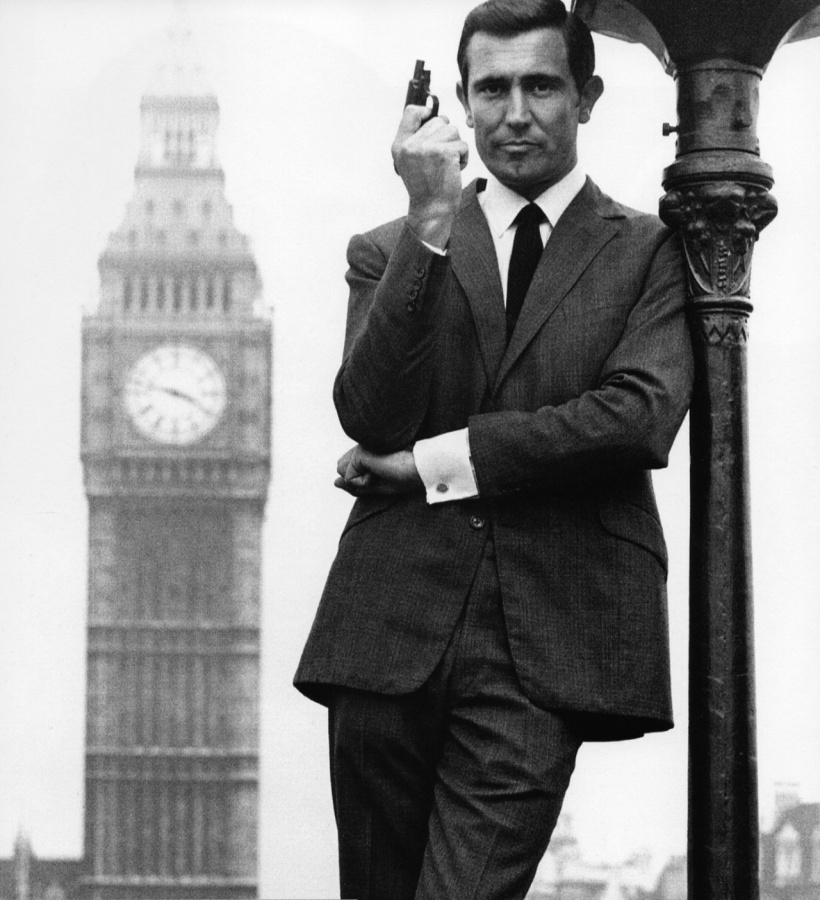 This tends to shock people, but it isn’t a Connery or a Craig. It’s the movie with the one-off Bond, George Lazenby. On Her Majesty’s Secret Service from 1969. Lazenby tends to turn people off, I know. He lacks Connery’s cool grace, the timing and tone of his line delivery often seems slightly off, and he projects blunt smugness rather than the refinement and charm we associate with the role. But it’s the movie he’s in that has always interested me. It’s the film where Bond becomes a serial character. He feels and grows.
This tends to shock people, but it isn’t a Connery or a Craig. It’s the movie with the one-off Bond, George Lazenby. On Her Majesty’s Secret Service from 1969. Lazenby tends to turn people off, I know. He lacks Connery’s cool grace, the timing and tone of his line delivery often seems slightly off, and he projects blunt smugness rather than the refinement and charm we associate with the role. But it’s the movie he’s in that has always interested me. It’s the film where Bond becomes a serial character. He feels and grows.
The Connery films before this—Dr. No (1962) through You Only Live Twice (1967)—gave us a serial figure reminiscent of the sound serial of 1940s and 1950s Hollywood—like Captain Marvel or Dick Tracy—or in postwar Britain, Dick Barton, Special Agent. They’re all “figures” in the sense that the plots written for them are highly repetitive and never all that invested in character development. They didn’t have to be. Writers for studio era serials—or for modern blockbusters like Indiana Jones and The Transporter—knew that what makes the serial figure popular is the simple motivations—“save the day,” “escape the trap,” “bring the villain to justice,”—and the pleasure of expectation and variation in the adventures the “figural” hero sets out on.
Like these other properties, 1960s Bond films set up a reliable formula. With each new installment, audiences came to anticipate not character development but a fresh twist on the established conventions. It’s not just that Bond had to drink a medium-dry vodka martini, travel to exotic locales, or pursue three sexual conquests in every film. It’s that these story elements had to be presented in ways that mixed familiarity with novelty. The villain needed an extravagant hidden lair, so let’s put it inside a volcano rather than at the bottom of the sea—variations like this were sufficient to renew audience interest at that point. Such was the franchise’s appeal.
The Lazenby film changed all that. It opened up the possibility of a different—a more character-based—cinematic Bond. In fact, On Her Majesty’s Secret Service marks the franchise’s first “return to Fleming.” In Ian Fleming’s novels, Bond does all of the Bondian things we expect of him, but he also moves through a range of emotional states, faces trauma, reflects on his life, his occupation, and is subjected to pangs of guilt and loneliness. On Her Majesty’s Secret Service showed that you could begin to explore these dimensions of character and still play with fresh variations on the popular Bond formula. It suggested a new way to strike the right balance.
Which actor has brought the most to the role of James Bond?
 Without question, it’s Sean Connery. He’s the prototype, the measuring stick. Every new Bond has to pass the “Connery test.” Connery knew that the best way to approach this sensational action-hero/spy was through the little things—the barely noticeable choices that create a certain aura of glamour about the character.
Without question, it’s Sean Connery. He’s the prototype, the measuring stick. Every new Bond has to pass the “Connery test.” Connery knew that the best way to approach this sensational action-hero/spy was through the little things—the barely noticeable choices that create a certain aura of glamour about the character.
What I mean by this is that the role of 007 doesn’t require “great acting.” There’s a different art at work here. Call it a new form of modeling. Since the late 1960s, each new Bond has had to deal with a passionate fan base that’s invested in the particular way Connery did things—walked into a room, lifted a martini glass, delivered a quip, threw a menacing glare, fired a punch, replaced a Walther PPK in its holster, and donned a tuxedo. Connery created a visual language for modeling the character—one composed of bodily attitudes, micro-gestures and expressions. The task before Lazenby, Moore, Dalton, and the rest was to master the language in their own ways.
In the earliest days of the franchise, directors of James Bond movies tended to do several 007 films. This has changed; the last eight Bond films have had six different directors. Which director do you think brought the most to the franchise, and what do you think the impact of the franchise’s “musical-chair” directing has been?
That’s a fascinating question. I’d say that Terence Young, the director of Dr. No, From Russia With Love (1963), and Thunderball (1965), left quite a significant imprint on the franchise. He showed how Bond films could swing between modes, between the spy thriller and the spectacle-driven blockbuster. If he hadn’t done that, the franchise would never have caught on, and we wouldn’t be talking about it today.
But Bond has always been a “producer’s cinema.” Through the mid-1990s, nothing happened on a film without the approval of Albert R. “Cubby” Broccoli. He co-founded Eon Productions, the production company that owns the film rights to Bond. It was this, and not the directors, that gave the franchise its consistency, at least as far as the character and the storyworld—the so-called “Bond Formula”—are concerned. His daughter Barbara and his stepson, Michael Wilson, remain at the center of creative decision-making to this day.
Still, what’s interesting is that the shifting personnel over the years—the many directors, set and f/x designers, and cinematographers who left their mark on the films—has made the franchise something of a deposit of changing aesthetic norms in the last half-century of film production. Think of how different Skyfall (2012) looks compared to the previous film, Quantum of Solace (2008). Quantum, directed by Marc Forster and shot by Roberto Schaefer, incorporates a mid-2000s hyperkinetic feel that captures Bond’s emotional state (he’s desperately seeking vengeance for Vesper’s death). By contrast, Skyfall director Sam Mendes and cinematographer Roger Deakins rely on a much more composed, even at times relatively restrained aesthetic, one that we tend to associate with contemporary independent or art cinema and that expresses the inner state of a much-less-turbulent, or outwardly turbulent, character. Aesthetically, Bond has always been a curious mixture of relative stasis and change.
The James Bond archetype has evolved considerably since the 60s; what did Bond represent in his earliest days, and how has that changed? Do you find these transformations to be reflective of societal changes?
Oh, to be sure! This is what tends to fascinate commentators. How Bond reflects the times. The franchise’s sexual, gender, racial, ethnic, and geo-politics. At first, the films tapped into Cold War anxieties—villains with roots in Communist Russia and “Red China,” and villainous schemes that threatened cities with atomic annihilation. During the era of détente between the Soviet Union and the West, Bond began to work alongside Russian agents to combat megalomanical menaces to global security. Then, in the 1990s and 2000s, Bond plots absorbed elements of post-Cold War politics—like neoliberalism in Russia—and here and there ventured into highly problematic territory, like the “Third Worldism” and Bush-era “Axis of Evil” fear-mongering of Die Another Day (2002), which paints North Korea as backward, unstable, and dangerously expansionist.
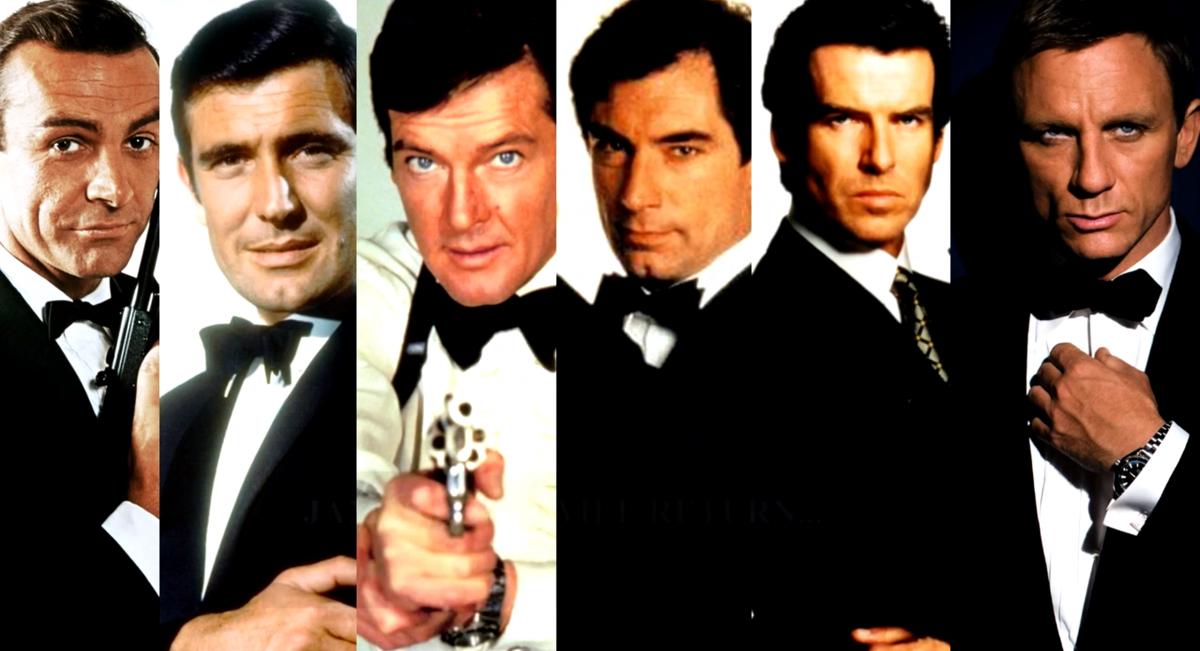
In terms of identity politics, the Bond franchise has far too often relied on caricatures and stereotypes. The reason is simple: the producers have always been keen to construct Bond as an emblem of charming and virile white heteronormativity. The variety of “others” that surround him in the films only reinforce this. Bold, strong women written explicitly as a response to the rise of feminism and the Women’s Liberation Movement—like Major Amasova in The Spy Who Loved Me (1977)—at first rival Bond’s virility and strength of character but are finally revealed as damsels in distress and sexual conquests. Dr. No, the very first screen villain, is presented as a “creepy” and impure foil for Bond because he’s coded as homosexual, disabled, and racially mixed. Things have changed, but only slightly, in recent years.
Quite frankly, 007 fans have to look elsewhere to discover more progressive versions of the character. And this is where being a fan truly yields rewards! One’s notion of Bond expands beyond the movies. In the recent comic book series, Vargr, Bond’s boss, M, is black, which has never happened in the movies. To mark 2011’s International Women’s Day, Craig appeared in a short video, in drag—forcing him to “walk in women’s shoes.” This, too, is unlikely to happen on the big screen. Then there’s the online slash fiction that sees Craig’s Bond fall in love with Ben Whishaw’s Q! It’s naughty stuff!
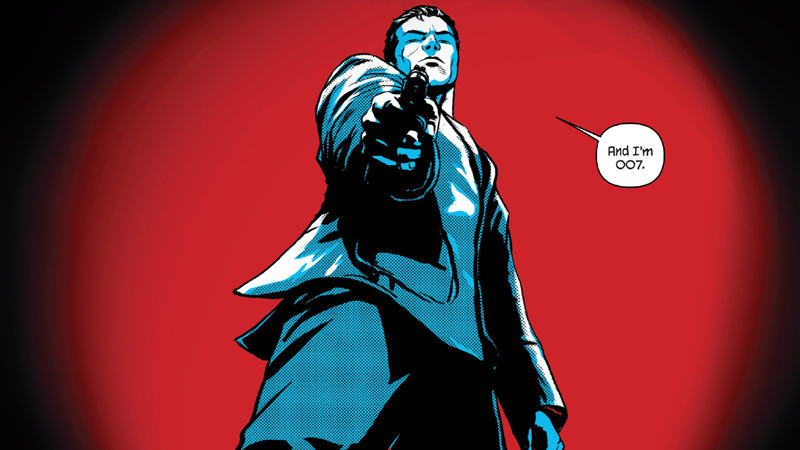 This is what seems quite unique to Bond as a modern storytelling phenomenon. There’s no one “archetype,” as you put it. On one hand, there are the versions in the authorized products—the many “Bonds” of the movies, novels, and comics—but, on the other, there are the pleasures to be found in the unauthorized stories that challenge the authority of official versions.
This is what seems quite unique to Bond as a modern storytelling phenomenon. There’s no one “archetype,” as you put it. On one hand, there are the versions in the authorized products—the many “Bonds” of the movies, novels, and comics—but, on the other, there are the pleasures to be found in the unauthorized stories that challenge the authority of official versions.
The way I think of it, Bond is something of a cultural market unto itself—a site where authorized and unauthorized authors join fans and even anti-fans in continuing to create and contest the meaning of the character. He’s a mobile signifier.
The copyright for James Bond (the character) expired in many countries, including Canada, in 2015. In light of news last year that Lee Demarbre and Ian Driscoll are planning a Canadian remake of For Your Eyes Only, what does public domain status mean for the James Bond franchise?
It’s difficult to say. The truth is that Eon Productions (the company that owns the film rights) and the Fleming estate have decades of experience shutting down efforts of this kind. As we speak, Eon is probably exploring its options, and looking to tie up this Canadian group in court for years.
The only other time Eon had to deal with a serious rival was in the making of Never Say Never Again (1983), a remake of Thunderball produced by Kevin McClory. McClory could claims rights to this one Bond story because he cowrote it with Fleming in the late 1950s. But it took him almost a decade to fend off Eon’s legal challenge.
Of course, I hope—for reasons I’ve mentioned, having to do with serial characterization—that this entry into the public domain will mean that more novels and films and comics come out that further develop the characters Fleming set in motion. There are already some promising signs of this! A collection of short stories published in Canada shortly after the copyright expired—with the cheeky title Licence Expired: The Unauthorized James Bond—includes an engaging little yarn about Bond’s arch-rival, SPECTRE head Ernst Stavro Blofeld, who writes Bond a personal letter that attempts to convince 007 that he’s working for a government that’s been infiltrated by the Communists, and that he’d be welcomed into SPECTRE, capitalism’s last line of defense. And intriguing re-interpretation of Blofeld’s motives through the lens of contemporary neoliberalism.
With the announcement that Daniel Craig has retired the role of 007, there have been many rumors regarding the series’ next star – including Idris Elba and Gillian Anderson. Who do you think the next James Bond will be, and what would the impact of a non-white male James Bond be? Where do you think the franchise is going as a whole?
 I for one am satisfied with Craig’s decision. Far more than any other Bond, he’s interested in character. And where does one go after Spectre(2015), where Bond walks away after deciding that the life that had led him to this point—to a juncture where he’d be forced to aim a gun at the head of his step-brother—was no longer palatable? Where Bond feels coarsened from the traumas he’s experienced—beginning with the death of his first love, Vesper—and is no longer willing to risk the little feeling he has left? Reports indicate that Eon approached him with a handsome 68£ million, two-movie deal and a story idea or two (I’d love to know what they were!). My hunch is that for this story-minded Bond the ideas simply didn’t cut it.
I for one am satisfied with Craig’s decision. Far more than any other Bond, he’s interested in character. And where does one go after Spectre(2015), where Bond walks away after deciding that the life that had led him to this point—to a juncture where he’d be forced to aim a gun at the head of his step-brother—was no longer palatable? Where Bond feels coarsened from the traumas he’s experienced—beginning with the death of his first love, Vesper—and is no longer willing to risk the little feeling he has left? Reports indicate that Eon approached him with a handsome 68£ million, two-movie deal and a story idea or two (I’d love to know what they were!). My hunch is that for this story-minded Bond the ideas simply didn’t cut it.
What’s next? One way or another, the producers need to come up with a game-changer. It’s not enough just to cast a fresh face. They could settle for that in the past, but not in the post-Craig era. If they want to build on Craig’s run, where the franchise hit box office returns of the kind it hadn’t seen since Roger Moore, then they’re going to have to think about two things at once: casting and characterization. No simple task!
This is perhaps the most challenging transition period in franchise history. Fans of the franchise now expect character development. The Craig era told the story of Bond’s career. In the credit sequence of Casino Royale (2006), Bond earns his “00” status. In the final scene of Spectre, he leaves that status behind and retires to private life.
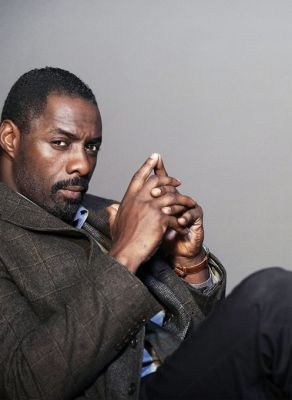 My guess is that all of these factors are weighing heavily on the decision Barbara Broccoli and Michael Wilson have to make. I have no doubt, given the buzz surrounding him, that they are inclined to give Idris Elba a shot. This truly would be a game-changer. Suddenly, the 007 experience would be a black experience, and the writers would have new layers of character and theme to explore. Suddenly, the longest-running franchise in film history would have a black man in the lead role. Make no mistake: it would stir controversy. Some, I am certain, would declare this casting a betrayal of “Fleming’s vision.” Others would find less veiled ways to refer to the “problem” of Elba’s race. But let’s not ignore the fact that he would draw new audiences of color to the franchise. And let’s not deny the possibility that with him in the role, 007, if one could imagine it, this literary product of late British imperialism and colonialism, would become a symbol of—perhaps even a promoter of—evolving race relations globally. 007 has that kind of reach. It could change minds, if that doesn’t sound too Pollyannish.
My guess is that all of these factors are weighing heavily on the decision Barbara Broccoli and Michael Wilson have to make. I have no doubt, given the buzz surrounding him, that they are inclined to give Idris Elba a shot. This truly would be a game-changer. Suddenly, the 007 experience would be a black experience, and the writers would have new layers of character and theme to explore. Suddenly, the longest-running franchise in film history would have a black man in the lead role. Make no mistake: it would stir controversy. Some, I am certain, would declare this casting a betrayal of “Fleming’s vision.” Others would find less veiled ways to refer to the “problem” of Elba’s race. But let’s not ignore the fact that he would draw new audiences of color to the franchise. And let’s not deny the possibility that with him in the role, 007, if one could imagine it, this literary product of late British imperialism and colonialism, would become a symbol of—perhaps even a promoter of—evolving race relations globally. 007 has that kind of reach. It could change minds, if that doesn’t sound too Pollyannish.
So will it happen? I think not. Unfortunately. The more likely route, because of all the issues weighing on the producers, is a younger actor (Elba is 44 years old)—possibly Aidan Turner (he’s 33). In this new era of serialized characterization, they may decide to turn the Craig era into back story for the Turner era, and narratively motivate the search for a new “James Bond”—now a codename in British intelligence. With the original’s disappearance, MI:6 needs a new Bond to fulfill his role. One could even imagine a movie down the line—perhaps two or three into the new era—where Turner’s Bond goes looking for Craig’s Bond, in hopes of enlisting his help to put an end to SPECTRE. All of this is sheer speculation, but if any of these ideas are being considered, then you can see why they’d want an actor of a certain age.
You’ve taught a freshman seminar on James Bond several times, but this semester, you’re teaching a 500-level class on the 007 saga. What do you plan to be the major takeaway from the course?
The 500-level course is an effort to turn Washington University into a hub of innovative research on the James Bond franchise. There’s a lot of good research out there on Bond, but so many questions remain unanswered.
What I hope to do is use the course as a laboratory to test out some ideas I am developing for my next book, Serial Bonds: The Multimedia Life of 007. The class will encourage students to view the story of Bond as the story of modern franchising. We won’t be studying Fleming the author per se; we’ll be examining him as the creator of a media property. From the moment he published the first novel in 1953, he was looking for ways to exploit what Japanese media scholars call a “media mix,” to spin Bond off into movies, comics, games, and TV shows.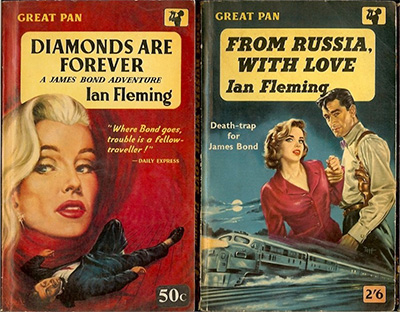
What makes Fleming’s approach—and the Bond franchise—worth studying today, especially in the era of the Marvel Cinematic Universe and the Star Wars Universe, is that Fleming had no interest in using these media platforms to create a coherent narrative experience. A Bond fan in 1962 could follow at least three overlapping, but ultimately divergent continuities involving the character—in the novels, the films, and in a widely read comic strip.
So if the Bond narrative experience is not one of transmedia seriality—the kind of linear story that’s spread across Marvel movies, shows, and video “one-offs”—how can we characterize it?
What I will propose is the Bond is an instance of threaded serialism, which, much like the game World of Warcraft (2004), consists of competing, contradictory, and interwoven chronologies and story arcs. If the Marvel Cinematic Universe aspires to textual unity, Bond is a “polytext,” incorporating a plethora of conflicting and intersecting narratives, sustained by a multitude of authors, some authorized and some not.




